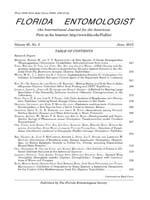With publication of Dragonflies and Damselflies of the East and the previously published Dragonflies and Damselflies of the West (2009), Dennis Paulson has made available the first comprehensive field guides to all the Odonata in the United States and Canada. One of the author's goals with these two volumes is to make it possible to “identify any of the 461 species of dragonflies and damselflies now known to occur in the United States and Canada.” A second goal is to provide natural history about each species to stimulate both amateur and professional interest, perhaps making knowledge and pleasure in Odonata rival that of butterflies and birds. The present book is beautifully illustrated with color photographs of the male and female of each species (no female photo available for a few species) and a color coded map of the US and Canada where the species is found. The entire book is printed on acid-free glossy paper.
The first 47 pages of the book give general background about dragonflies and damselflies, general natural history, colors, comments about common names that are only recently available for many of the species, how to collect and preserve odonates, threats to the conservation of odonates, and a couple of pages explaining the general nature of the species accounts given with each species. The section on how to collect, label, preserve, and store odonates will be valuable to young collectors, as is the section of labeled illustrations of the morphological and anatomical features needed to identify species in this introductory section.
The photographer is identified with each photo, and where no name is given, the photo is by Paulson himself. In the 14 cm × 21.5 cm-format of the paperback volume that I have, the male and female color pictures with accompanying text typically comprise about 1 page (although a new species does not necessarily start at the top of each page). In a green color bar across the page above the text about each species Paulson gives the common name, scientific name, total body length in mm and hindwing length in mm. Below the bar is the text including Description, Identification, Natural history, Habitat, Flight Season, Distribution (in addition to the color coded map) and occasionally a comment about the species or former common name.
Illustrations and text on damselflies, the Zygoptera, begin on page 49 (and continue to page 164) with damselflies organized into the Broad-winged Damsel family, the Spreadwing family, and the Pond Damsel family. Pages 165 to 517 comprise dragonflies, the Anisoptera, organized by families as follows: Petaltails, Darners, Clubtails, Spiketails, Cruisers, Emeralds, and Skimmers. On page 519 Paulson lists 4 species now found in the west that were not known there in his 2009 book on western dragonflies and damselflies. There is a list of books, some technical publications, and websites for Odonata on pages 521–522, a glossary on pages 523–525, and finally an index listing common and scientific names and page or pages where the species is described or illustrated. The photos are numbered, but apparently only indicate sequential position in the book.
Dragonflies and Damselflies of the East is a valuable book for anyone interested in insect natural history and conservation. The price is fantastic for such a thorough and beautiful book. I recommend this book for every professional and amateur entomologist as a wonderful addition to a personal library; for collectors of odonates, it is indispensable.





